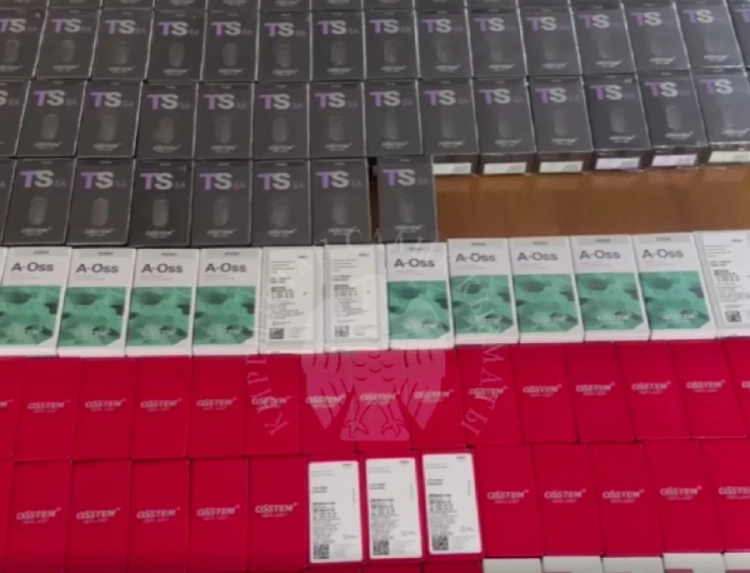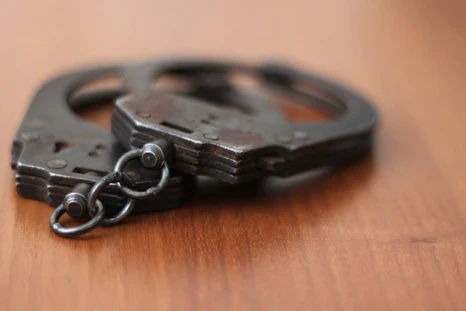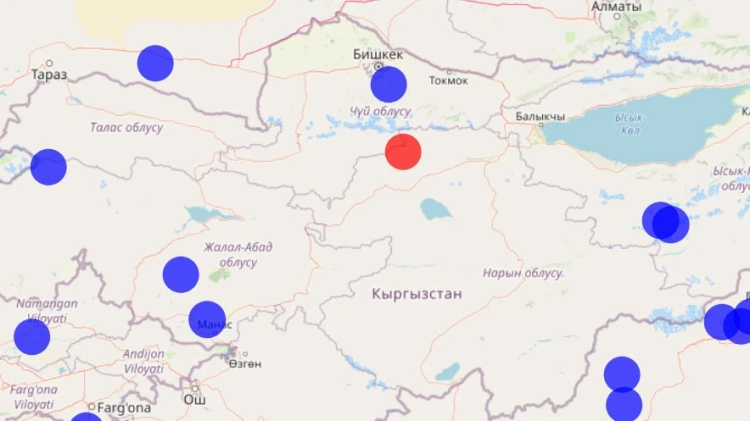
At the checkpoint "Ak-Zhol," tax officials, together with border guards, identified an...

Hotel "Love Story" on Issyk-Kul The hotel with the incredibly beautiful name Love Story...

The hero was awarded by local authorities for his bravery...

The total value of the smuggled cargo exceeded 1 million soms...
At the Ak-Zhol checkpoint, employees of the State Tax Service of the Kyrgyz Republic discovered an...

The farewell ceremony was attended by the city mayor and the chairman of the city council...

In addition, a similar statement was filed by a resident of the village of Ak-Jol, A.A., born in...
On October 10, in Ak-Turpak, at the secondary school named after Sh. Zheenbaev, an altercation...
On Frunze Street in the town of Orlovka, Kemin District, Chui Region, work has begun on laying new...
At the cemetery in Osh, the funerals of six individuals who became victims of a recent fire on...

October 12-14 International Beauty Championship From October 12-14, 2018, the most anticipated and...

The rock band from Bishkek, "The Rolls Band," performed their song "And I Love...
A video has surfaced online in which, reportedly, a man behaves inappropriately towards young women...
Kyrgyzstan is a small country bordering Uzbekistan, Kazakhstan, and Russia. The main attractions...

The stylish bar "Times" is unique, primarily due to its location: the panoramic view...
The Ministry of Construction, Architecture, and Housing and Communal Services has received a video...
Ordo Sakhna – The Folk Ethnographic Theater. Biography. The folk ethnographic theater Ordo Sakhna...

Nature Parks and Reserves: Relict Walnut-Fruit Forests of Arslanbob Sary-Chelek Biosphere Reserve...
In the Issyk-Kul region, an active fight against predators threatening livestock has begun, reports...

According to the Ministry of Internal Affairs, during further investigative actions on October 14,...

Bar on the beach Raduga Marina club: Kyrgyzstan Night club for relaxation on the shores of Lake...

KUZNETSOV Georgy Fedorovich...

On April 7, the Museum of Modern Art in Manhattan, New York, will screen the film...

Times Bar Bishkek: Cuisine, Format The stylish bar "Times" is unique primarily due to...

The international business newspaper Financial Times recommended its readers to visit Kyrgyzstan...
Ruslan Perezhiga, who lives in the village of Tyup in the Issyk-Kul region, speaks Kyrgyz fluently...

Asanov Avyt (1952), Doctor of Physical and Mathematical Sciences (1993), Professor (1998)....
These people blew up the internet, and the world started talking about them....
Beautiful Kyrgyz women, winners and participants of beauty contests, models, actresses, and simply...

On October 9, 10, and 11, 2014, the largest international exhibition of cosmetics and perfumery,...

Vigorous Ground Beetle Status: Category II (VUBlb(iii)+2b(iii,iv); C2b). A narrowly distributed...
In the Kara-Kulja district of the Osh region, a dog attacked a child, resulting in the child's...

Short-winged Bladder-senna Status: VU. One of three very rarely occurring species of this genus in...

Last weekend, the fifth international championship of Kyrgyzstan in pole acrobatics was held at...

Desert Long-eared Bat Status: Category VII, Lower Risk - Least Concern, LR/lc....

On March 29, a beauty contest among married women, "Mrs. Kyrgyzstan 2015," will take...
The semifinals of the first annual award – "Most Fashionable Awards 2015" will take place...

Gentleman club - open for you every evening. The best striptease in Bishkek, stunning beauties who...

Tapered Net-cap (Dictyocephalus attenuatus (Peck) Long et Plunkett). Status: VU. A very rare...

According to information from seismologists, tremors were not detected in Almaty; however, the...

A bright participant of the dance team "Well Be," Maksat Toktonaliev, has recently...

KYZ SAYKAL - MAIDEN-WARRIOR In the memory of the Kyrgyz people, the name of the fearless...

You can escape the scorching city heat by coming to the 'Health Club' Recreation Center....

Murakami at PROMZONA.space “Murakami” is a popular Russian rock band formed in November 2004....

The 12th Open City Championship in bodybuilding, classic bodybuilding, fitness, bodyfitness,...

The video titled "The beauty of Kyrgyzstan" ("Красота Кыргызстана") was...

On March 9, preparations began for the joint Russian-Tajik exercises, which will take place from...